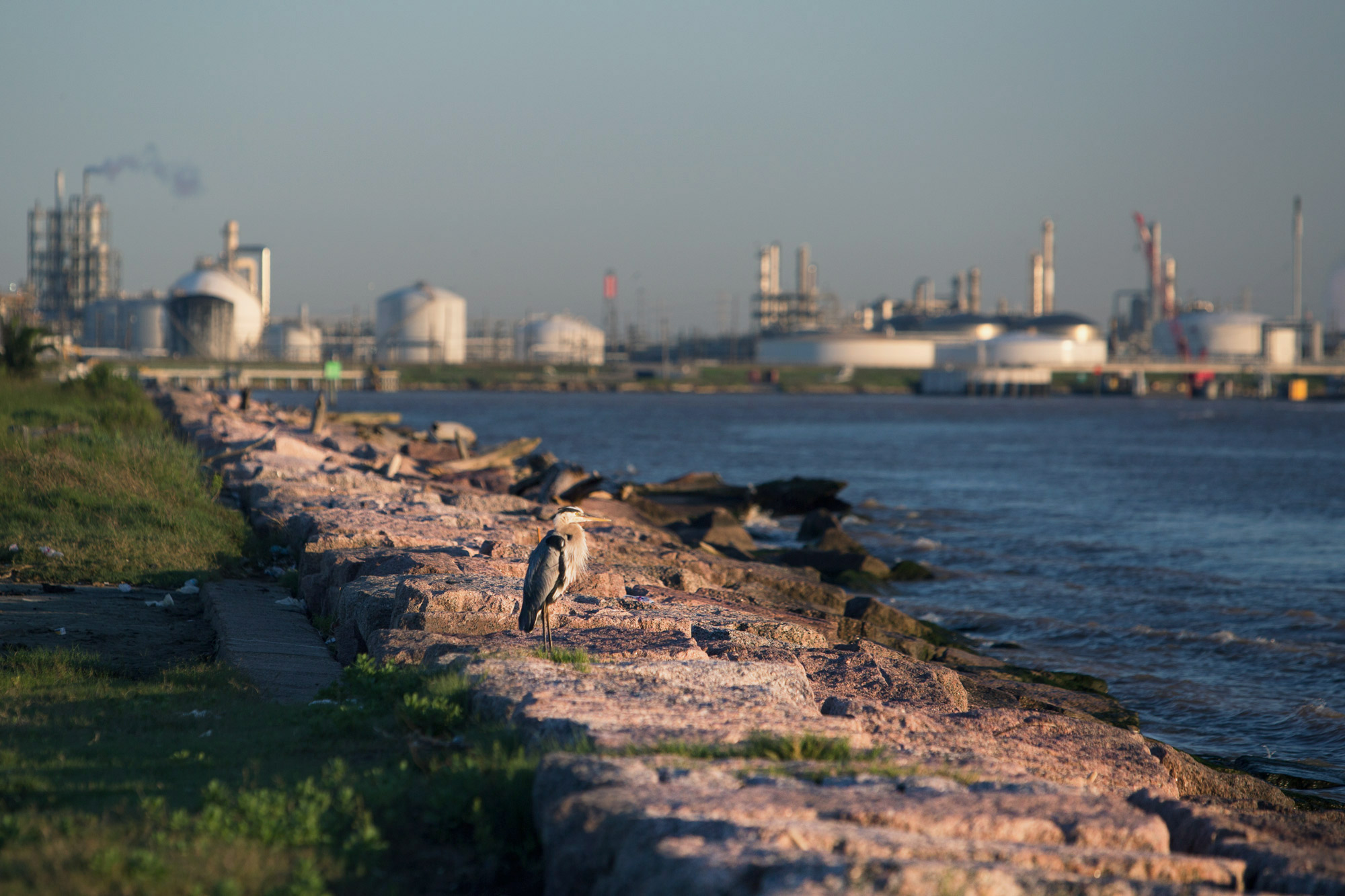Cyanobacteria are one of the oldest known life forms on earth. Better known as blue-green algae, the photosynthetic microorganism occurs naturally in almost all waterways around the world. The algae itself is relatively benign. But when it mixes with runoff from cities and farms, carrying fertilizers and other pollutants, the algae can start to bloom and release a powerful toxin that can cause rashes and stomach, liver, or respiratory problems in humans.
This summer, one such bloom led to the death of multiple pets that had been swimming in, and likely ingested, contaminated water in Austin’s Lady Bird Lake. (No human cases of poisoning have been reported.) In Austin’s waterways, which are part of the Lower Colorado River watershed, algal blooms themselves aren’t uncommon. But in years past, the blooms haven’t been of the toxic variety—most reported sightings have been about the type of gold or green algae that forms a layer of harmless, if aesthetically unpleasant, scum in the water.
“In general, algae are a natural part of the ecosystem. They’re essential at the base of the food web—they’re just plants,” says Brent Bellinger, a senior environmental science specialist with Austin’s Watershed Protection Department. The city is still investigating the specific set of factors that caused the toxic, blue-green cyanobacteria in particular to bloom in high concentrations this summer. Austin is the only city where the Texas Parks and Wildlife Department (TPWD) has confirmed cases of cyanobacteria this summer. For now, the department recommends that people and pets avoid swimming or drinking from pools of stagnant water where algae is visible—whether or not it’s the poisonous kind.
Blue-green algae thrive in warmer, drier climates to begin with, says Daniel Roelke, the head of Texas A&M Galveston’s department of marine biology. Overall warmer temperatures also bring heavier than normal spring rains—meaning larger volumes of runoff in streams, rivers, and lakes. In Texas, much of the state experienced above average rainfall from April to June, inundating those waterways with pollutants. Then the rain virtually stopped. The water stagnated, heat evaporated some of the moisture, and the accumulated pollution was never flushed out. These three factors—warm temperatures, heavy spring rains, and a dry summer—provided the perfect conditions for blue-green algae.
Today, any given body of water in the United States is likely to see about a week of harmful algal blooms in a year. By mid-century, under the effects of climate change, that could triple to three weeks, according to one analysis. The impact on tourism and recreation can be detrimental, as Mississippi found out this summer when 20 beaches along the state’s coast shut down. Texas’ waterways have so far been spared a similar fate this summer, though local waterways and points of access, like Austin’s Red Bud Isle, have been closed off.
In the Gulf of Mexico, yearly algae blooms have created one of the world’s largest aquatic “dead zones.” Water laced with fertilizer from cities along the Mississippi River and other watersheds feeds the algae, which thrive on it much like a suburban lawn turns lush and green with fertilizers. As the algae blooms, dies, and decomposes, it depletes the water’s oxygen content, killing off other species of marine life.

Whether it’s in a local stream or river or in the Gulf, once the algae blooms have taken hold, it’s hard to treat the problem, says Anna Farrell-Sherman, a clean water expert at Environment Texas. “We can’t kill the bacteria, since that breaks open the cells and releases more toxins into the water, making the problem worse,” Farrell-Sherman says. And using chemicals or pesticides can end up negatively impacting the rest of the ecosystem, or be cost-prohibitive in a watershed as large as the Lower Colorado River, Bellinger says. That’s why many swimming holes and streams simply shut down when the algal blooms get out of hand.
One effective way to reduce the likelihood of algal blooms is preventative, through “nature-based infrastructure,” Farrell-Sherman says. In other words, reducing the amount of pavement that’s used to funnel water out of a city by using solutions found in nature. When water drains through soil, the nutrients and pollutants that feed algal blooms get filtered out. Building features like green roofs, and impervious pavement instead of concrete, can increase the amount of impervious cover in cities—with the added bonus of reducing urban heat island effects. And flood control measures can also serve a dual purpose: detention basins and channels lined with native vegetation soak up more water than pavement, and the plants and soil will naturally filter the water of pollutants.
Another solution to the problem could be regulating the amount of nitrogen that’s allowed into waterways from fertilizers, Roelke says. And Texans who live along any of the state’s watersheds can help reduce the scale of the problem by applying less fertilizer in lawns and greenspaces during the spring. Every drop counts, Farrell-Sherman says, and can make toxic algal blooms that much smaller—and the swimming season that much longer.
This story is part of Covering Climate Now, a global collaboration of more than 220 news outlets to strengthen coverage of the climate story.
Read more from the Observer:
-
After Decades of Living with Pollution, Relocation Program Offers Corpus Christi Residents a Way Out: For decades, residents of Hillcrest were exposed to chemicals from nearby Refinery Row. With “mixed feelings,” residents are now moving out of the neighborhood.
-
The Trump Administration Blows Its Border Wall Budget in South Texas: A Texas Observer review of federal documents found that Congress gave CBP $445 million to build 25 miles of border wall in Hidalgo County. The money only paid for 13 miles.
-
Ken Burns’ New Documentary Builds a Bigger Tent for Country Music: Co-opted by whites, country music was largely shaped by black and immigrant musicians.







